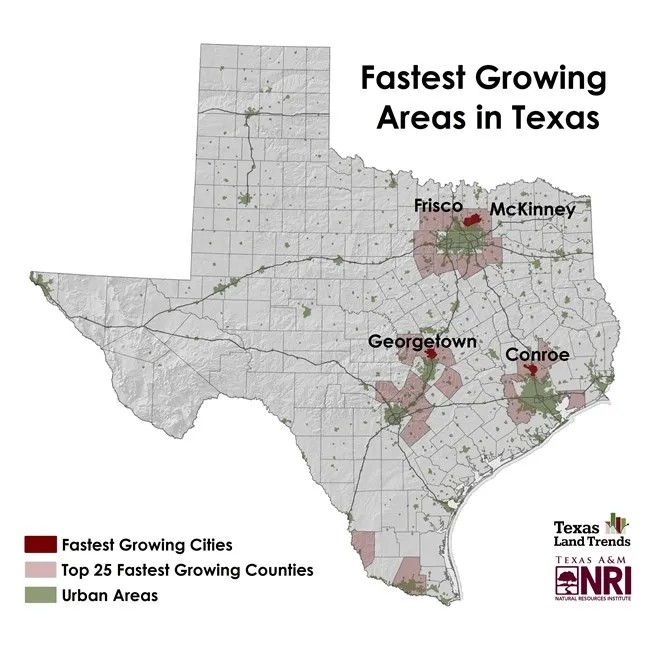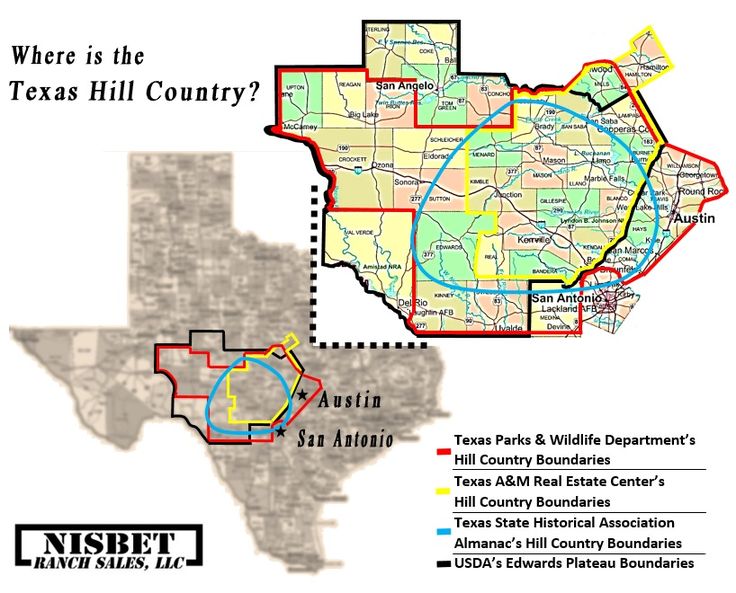
For too long, cities across the U.S. have attempted to define their startup communities by adopting monikers like “Silicon Prairie,” “Silicon Hills,” or “Silicon Beach,” an approach that inadvertently undermines their efforts to establish distinct, innovative identities. By labeling themselves after Silicon Valley, cities unintentionally (and likely unwittingly) put themselves second to an established technology hub, anchoring their aspirations to a model built on a bygone era of innovation. Silicon Valley earned its name through its direct association with the emergence of radar, the semiconductor, and the subsequent evolution of the computer, which, then connected, established the internet. Today’s startup ecosystems are built on entirely different dynamics, and clinging to the “Silicon” tag falls short of conveying the true breadth of innovation happening across industries such as decentralization and blockchain, artificial intelligence, and biotechnology.
Moreover, Silicon Valley is not a city, but a region—a fact often overlooked when comparing single cities like Austin or Denver to a geographically and historically unique cluster of innovation. This misstep results in unrealistic expectations, diluting the focus on the specific advantages these cities and regions possess. Aggravatingly, we see this perpetuated by thought leaders and startup data sources (the media) who incessantly share comparisons of cities (Chicago, Dallas, and Miami) to Silicon Valley, as though a city should be holding a torch against 4 major cities identified as an ecosystem.
Before diving into what I firmly believe should be, take a look at various words associated with technologies and let’s tease out why the words decided upon matter. We might reinforce the implication of Artificial Intelligence, the buzzword and hype of 2024, but how… Artificial Area? AI America? We quickly see that the misstep in that branding is that artificial intelligence is on the path to being as ubiquitous as technology itself, it will be an underpinning of everything in a way that can’t even be said of silicon (an underpinning of hardware but falling short of inspiring innovation in mobile, the internet, or AI, which are derivatives of silicon). How about the Crypto Capital? No, that’s a sector, and I’ve asserted that FinTech is a better moniker, evident in a region like North Texas; but FinTech too is a distinct specialization and not horizontal (though, we could argue, rightly, finance is horizontal; it falls short of the inspiration of all innovation). A Blockchain Bowery? Bowery seems to go well with the rowdiness of what we experienced in the blockchain hype of 2022, and decentralization is an underpinning of innovation, but let’s admit it, the hype of blockchain relegated it to a buzzword and everyone is now questioning it’s overuse by founders hoping to attract attention as haphazardly as the claims now that they’re an AI thing.
Before distinguishing what the word might be, I found myself fixated on the fact that the 35 corridor (a freeway slicing the United States in half from north to south), is the epicenter of the fastest growing metropolitan region in the country, if not the world. The corridor.
Much of what I’m exploring here is derived from the experience I had relocating from Silicon Valley to Austin, Texas, going on two decades ago. What struck me was the focus of Austinites on Austin in this context, the “Austin Startup Ecosystem.” And while, as you all know full well, our collective work to establish Austin’s role in entrepreneurship, I held concern when I heard local founders, investors, and advisors suggest going to San Francisco to raise capital in Silicon Valley – misunderstanding or misrepresenting that Silicon Valley is the city, not the region. With Silicon Valley’s capital and academic considerations largely well beyond San Francisco, and the breadth of the Valley being from San Jose to the Marina at Golden Gate Park, arriving in Texas struck me as missing something when San Antonio is right down the road from Austin. Very few of us in startup economic development throughout the Texas ecosystem spend our time in Houston, Dallas, Austin, and San Antonio, let alone the cities in between, and investors, events, universities, and startups, continue proclaiming their pride, focus, and support, on their city.
Here’s the rub in doing that… a Venture Capitalist who establishes that their investment thesis is on the city pertaining, is asserting that they disregard the better investment opportunity in favor of a location. A startup annoucing that their launch and Go To Market strategy is to find initial customers *here* is communicating that they are ignoring or ignorant of the fact that their ideal customers, through the internet, are everywhere. An advisor or event oriented to this city, is inevitably myopic of the more ideal opportunity for founders that might be 30 miles away.
Moreover, Texas transcends the “Silicon” label entirely. This is evident in the fact that what caused the economic and innovation boom of Texas recently, is the simple fact that Silicon Valley’s dominance of internet experience is finally over, merely because people and companies elsewhere have finally caught up with how the internet works and what it means. As a result, Texas, an already dominant hub of agriculture, energy, media, education, and more, naturally becomes the ideal place for AgTech, CleanTech, MediaTech, and EdTech. When not bound by a singular city, the statewide ecosystem, with strategic industry diversity, economic benefits, and innovation potential, naturally becomes a place among many ideal for founders. But is it Silicon? It’s time for regions like Texas to step out from the shadow of Silicon Valley and define the future of technological advancement in the context of the most meaningful changes underway
Article Highlights
“Quantum,” first, for Babies
It was the revolutionary potential of quantum computing that initially captivated William Hurley (whurley) in 2016 “I wished, when I was younger, I could have been there when Jack Kilby invented the integrated circuit or Bob Metcalfe created Ethernet. I saw quantum computing as the future of science fiction unfolding in the present.”
whurley believes that these machines, utilizing physical matter to emulate the real world rather than simulating digital information, will be instrumental in maximizing the benefits of artificial intelligence. He has shared many of the same concerns about AI’s potential dangers that are often discussed; however, he offers a more optimistic perspective, envisioning quantum computing and AI as essential tools for addressing a range of critical global challenges, including food scarcity, diseases, and climate change — a cause that holds particular significance for him. He is confident that these problems have solutions, and technology will play a pivotal role in discovering them.
Leading the way to Strangeworks, in 2018, whurley wrote a book for children (or adults needing that simplicity), Quantum Computing for Babies. He noted, by the way, while being based in Austin, Texas, of startups “Right time, right people, and right place is awesome. But also needs the right idea and the right support. Because none of us can grow a company alone.”
See where I’m coming from? Not just a specific place nor timing the launch of a startup, but having the right people, certainly from beyond your city, such that we inspire great ideas and draw meaningful, experienced, and fueling support – the likes of which we might feel in quantum computing and in what wealth emigrating from where it is, to this region of the world, might be seeking to impact.
With babies in mind, let’s look at this even more simplistically still before explaining why here. You might be familiar with the well-established economic region, and opportunity, of the Texas Triangle. With Texas A&M among other institutions encompassed by this region, we can’t neglect that Houston, Dallas, and Austin / San Antonio comprise the corner points of one of the most important regions of the world, all booming; and yet, look at this visual of the region, from Texas A&M Natural Resources Institute and explored by geospatial specialist Alison Lund. Perhaps you see what I see: the lower left corner of the triangle isn’t a city, it’s neither Austin nor San Antonio, it’s both; it’s that region that struck me when I found it odd that people focus on Austin or San Antonio, it’s close enough together to be similar to the Silicon Valley region, or, frankly, the North Eastern region beyond New York.
The “Fastest” Growing Corridor in the Country
The Quantum Corridor
Texas is rapidly establishing itself as the preeminent hub for quantum computing in the United States. The state’s unique blend of technological infrastructure, innovation ecosystem, strategic investments, and favorable economic conditions creates an unparalleled environment for the advancement and practical application of quantum technologies. Quantum computing, with its potential to revolutionize industries from pharmaceuticals to finance, finds a promising home in Texas, offering distinct advantages over other tech centers, notably California.
Quantum computing represents a paradigm shift in computational power, leveraging the principles of quantum mechanics to solve problems that are currently intractable for classical computers. Texas, with its strong academic and research institutions, is at the forefront of this technological revolution. The University of Texas at Austin (UT Austin) stands out with its Texas Quantum Institute leading groundbreaking research in quantum information science. According to a study by the National Science Foundation, UT Austin ranks among the top institutions for quantum research, contributing significantly to the understanding of quantum algorithms and quantum error correction.
Beyond academic excellence, Texas’ commitment to the practical application of quantum computing is evident in the collaborative efforts between industry and academia. Companies like IBM, Google, and Honeywell, which have significant operations in Texas, are investing heavily in quantum research and development. IBM, for example, has chosen Austin as a key location for its Quantum Network Hub. This hub facilitates collaboration between academia, industry, and government to accelerate quantum research and its practical applications. This synergy ensures that theoretical advancements quickly transition into real-world applications, driving economic growth and technological leadership.
One of the foremost thought leaders in quantum computing, Scott Aaronson, a professor at UT Austin and director of its Quantum Information Center, emphasizes the practical benefits of quantum computing in solving complex problems. “Quantum computing has the potential to revolutionize industries by providing solutions to problems that are currently beyond the reach of classical computers, such as drug discovery, material science, and complex optimization problems,” Aaronson explained. This transformative potential is being harnessed in Texas through strategic collaborations and investments.
Texas’ emergence as a quantum computing powerhouse also offers significant economic benefits compared to traditional tech hubs like California. The cost of living and doing business in Texas is notably lower than in California. According to a report by CNBC, Texas has one of the most favorable business climates in the country, with no state income tax, lower corporate taxes, and a regulatory environment that encourages innovation and entrepreneurship. This economic advantage attracts both established companies and startups, enabling them to allocate more resources toward research and development rather than overhead costs.
Furthermore, Texas’ energy sector plays a crucial role in the practical applications of quantum computing. The state’s vast energy resources and leading position in the energy industry provide a fertile ground for the implementation of quantum technologies. Quantum computing has the potential to revolutionize energy production and distribution, optimizing processes, and reducing emissions. Companies like ExxonMobil and Chevron, with significant operations in Texas, are exploring quantum solutions for optimizing energy extraction and improving efficiency. The intersection of quantum computing and energy in Texas underscores the state’s strategic advantage in this burgeoning field. This draws our corridor both toward Houston and that Texas Triangle while also pulling those sectors quintessentially Houston, to our corridor.
Quantum computing’s potential to solve complex problems extends beyond the energy sector. In pharmaceuticals, for example, quantum computers can simulate molecular structures and interactions at an unprecedented level of detail, speeding up drug discovery and development. This capability could lead to breakthroughs in treatments for diseases such as cancer and Alzheimer’s. Texas, with its strong biomedical research institutions and biotech industry, is well-positioned to lead in this area. The Texas Medical Center in Houston, the largest medical complex in the world, is already exploring quantum computing applications in genomics and personalized medicine.
Financial services, which are increasingly being established for the future through Dallas, also stand to benefit from quantum computing, particularly in optimizing investment portfolios, risk management, and fraud detection. Quantum algorithms can process vast amounts of data and perform complex calculations much faster than classical computers, providing financial institutions with a significant competitive edge. Texas’ growing financial sector, coupled with its tech-savvy workforce, provides an ideal environment for the deployment of quantum computing solutions in finance.
The practical benefits of quantum computing in Texas are further enhanced by the state’s supportive policies and investments in technology. The Texas Government has launched several initiatives aimed at bolstering the tech ecosystem, including the Texas Innovation Alliance and the Texas Quantum Initiative. These initiatives aim to attract funding and talent to the state, ensuring that Texas remains at the forefront of technological innovation. Governor Greg Abbott has emphasized the importance of positioning Texas at the forefront of technological innovation, stating, “Texas is committed to leading the next technological revolution, and quantum computing is at the core of this effort.”
Texas’ emergence as a quantum computing powerhouse is a testament to its comprehensive and forward-thinking approach. By fostering strong academic institutions, a collaborative industry environment, supportive government policies, and a favorable economic climate, Texas is not just keeping pace with the quantum revolution—it is leading it because it is uniquely situated to apply it. As quantum technologies continue to evolve, Texas’ strategic investments and visionary leadership ensure that it will remain at the forefront, driving innovation and economic growth for years to come.
But Not All of Texas, Faster (Growing) is Quantum Specifically Here
That assessment of the broader Texas potential might push us from our Austin / San Antonio corridor, both east and north to Houston and Dallas and that triangle, but I want to reinforce the significance of that lower left point of the triangle and bring us back to this 35 corridor between Texas’ Capital and Texas’ historic and international city of San Antonio.
San Antonio is emerging as an important player in the quantum computing ecosystem, primarily due to its robust cybersecurity infrastructure, proximity to key military and government institutions, and the growing presence of tech companies and academic research in the city. Notably, the city’s rich defense background, with institutions like Joint Base San Antonio and the National Security Agency (NSA), has fostered a focus on cybersecurity that is highly relevant to quantum technologies, particularly in quantum encryption and post-quantum cryptography.
One of the key players in San Antonio’s quantum landscape is Southwest Research Institute (SwRI), one of the largest independent, nonprofit, applied research and development organizations in the U.S. While SwRI has historically been more focused on engineering and space research, it has increasingly ventured into quantum research, particularly in computational applications that benefit from quantum advancements.
Another company making waves in quantum computing and cybersecurity is Booz Allen Hamilton, which has a significant presence in San Antonio. Booz Allen is at the forefront of developing quantum-safe cryptography, focusing on preparing for the era when quantum computers could break traditional encryption methods.
On the academic front, The University of Texas at San Antonio (UTSA) has also been contributing to quantum computing research, especially in the fields of quantum cryptography and quantum communication. UTSA’s partnership with local defense contractors and tech firms strengthens San Antonio’s positioning as a key city for practical quantum applications, particularly in secure communications and national defense.
While San Antonio is not yet home to a major, high-profile quantum computing company or startup like Strangeworks in Austin, the combination of military-related cybersecurity needs and academic interest creates fertile ground for the future growth of the quantum sector in the city. In terms of prominent figures, much of the quantum progress in San Antonio seems to stem from research collaborations and interdisciplinary efforts rather than individual founders or celebrity CEOs. However, leaders at SwRI and academic institutions like UTSA are crucial contributors to the region’s growing reputation in this space.
“Latina CEO” Janie Martinez Gonzalez, runs Quantum Realm Computing and CPS Energy from San Antonio, and served through a strategic mission from San Antonio to Washington, “The promise of AI and quantum computing to transform cybersecurity cannot be overstated. AI’s ability to automate complex threat detection and response processes at unparalleled speeds and quantum computing’s potential to upend current encryption methodologies herald a new era of digital security. Moreover, quantum encryption techniques, such as Quantum Key Distribution (QKD), offer the promise of unbreakable communication security, setting the stage for a seismic shift in how sensitive information is protected.”
Notably and missed by most, the region’s source of wealth (which I distinguish from the Finance Industry or why Texas has wealth – agriculture, oil, and land) is increasingly found throughout what’s called the Hill Country.
Some years ago, I pushed Austin’s startup ecosystem to realize that it’s capital community was indeed already beyond Austin proper (and certainly isn’t downtown), because most of the wealth around Austin is found in the northwest area beyond Austin proper; not coincidentally, in Austin’s Hill Country. And would you look at that, our corridor from Austin to San Antonio, our “Quantum Corridor,” is the eastern edge of the Texas Hill Country.
Throughout Kerrville, Fredericksburg, Wimberly, Dripping Springs, San Marcos, New Braunfels, and Borne, what most are unfamiliar with, because the media hasn’t exposed it well, is that the musicians, athletes, actors, bankers, investors, and frankly, other people of means, relocating to Texas, are largely settling this Hill Country. Beyond San Francisco’s gold and more than Texas’ oil, the wealth seeking opportunities in innovation and entrepreneurship is increasingly found in these hills of Texas, just west of the corridor.
Come on Paul, it’s not Texas…
Is Quantum computing really found foremost in Texas? In fact, and in fairness, no; but thinking that is missing my point entirely. Most quantum computing innovation in the U.S. is concentrated in regions with strong academic, tech, and government collaboration, particularly the Northeast and West Coast. The Boston/Cambridge area is a major hub, driven by institutions like MIT and Harvard, as well as companies like IBM and startups like Rigetti. The San Francisco Bay Area, including Silicon Valley, is another key center with tech giants like Google, IBM, and startups working on quantum technologies. Additionally, areas like New York and Washington, D.C., are emerging due to their focus on financial applications and government research, respectively.
Keep in mind what has been happening for the better part of the last dozen years. Innovation is leaving the west coast, largely for the middle of the country and Texas, while the wealth and financial hubs of the northeast are shifting to Dallas and the Hill Country.
More importantly, keep in mind WHY innovation has boomed in Texas, following the near singular dominance of the computer and internet through Silicon Valley — innovation is NOT the invention of technology but the practical application in invention in a meaningful way that creates value. In fact, the internet itself, as well as components of the computer, were largely “invented” in the military and academic halls of other cities, but it was Silicon Valley that turned invention to innovation… and it’s Texas that is, largely, taking those innovations and applying them to sectors. Likewise, while the research and invention in Quantum continues in those academic and military/government funded labs, it begs the valid question of where *instead* invention will become innovation. Arguably, where the application of the invention is most practical, efficient, and valuable – in energy, cybersecurity, in fintech – in Texas.
What’s intriguing is that beyond this Texas corridor, this Quantum identity makes sense along this corridor slicing the country.in half from south to north. From Texas to the midwest, we can affirm that invention considered elsewhere often become innovation where entrepreneurs create value. Purdue has recently joined forces with the University of Michigan and Michigan State University to form the Midwest Quantum Collaboratory (MQC), offering significant contributions to the quantum science and technology sector. The university is involved in various research activities aimed at pushing the boundaries of quantum technology??. The University of Chicago: Known for its extensive research into quantum theory and a key player in the quantum computing sector, especially within the Chicago area, where it contributes significantly to the field through other local institutions and businesses. EeroQ in Illinois, moved its headquarters to Chicago, marking the city as a growing hotspot for quantum computing application, and Chicago is further bolstered by entities such as Duality, the nation’s first quantum startup accelerator, and the Chicago Quantum Exchange, an intellectual hub for quantum information science.
Indeed, Ilinois is positioning itself as a “quantum prairie,” rivaling Silicon Valley in quantum computing advancements and appreciating my point that we need to move perception to the future beyond Silicon, and we need to think regionally more than locally. The University of Chicago’s partnership with the University of Tokyo, supported by a substantial grant from IBM and Google, aims to push the boundaries of quantum computing. Illinois is home to four of the nation’s ten quantum computing centers and the country’s longest quantum network. This network connects the U.S. Department of Energy’s Argonne National Laboratory, the University of Chicago, and the Chicago Quantum Exchange, highlighting the state’s leading role in quantum computing research and development??.
A move in the right direction, the United States has 8 supercomputers, and Argonne National Laboratory (ANL) in Lemont, Illinois, a southwestern suburb of Chicago, is home to one.
Supercomputers, by the way, are optimized for performing large-scale calculations very quickly using traditional computing principles, so expensive are these that only 8 yet exist; while quantum computers, on the way, exploit the strange properties of quantum mechanics to solve certain types of problems that classical computers either can’t handle or take too long to process.
About 25 miles from downtown Chicago, Aurora, is part of the Department of Energy’s (DOE) Exascale Computing Project. Aurora will assist with challenges in energy production, artificial intelligence (AI), and material science.
I mention this though, not to draw your attention away from my corridor, but instead redirect it back given the very recent news from the National Science Foundation of where the next computer will go… The Texas Advanced Computing Center (TACC) has solidified Round Rock’s standing in the tech world by selecting it as the location for its latest AI supercomputer, named “Horizon.” Housed at the Sabey Data Centers campus. Round Rock, incidentally, is just up the 35 road on the corridor from Austin.
What comes for the U.S. economy at large in establishing this 35 freeway corridor as the country’s Quantum epicenter?
Hopefully it’s evident that throughout the history of the identity of cities and regions of the world, what drives technology from invention to innovation is not the research behind the science but rather the application upon where the innovation creates the most value, driven as much or more by the marketing, brand, storytelling, and identify of the place.
Photography and the motion picture camera was invented elsewhere but Los Angeles and Hollywood turned technology into industry, just as computing or the ethernet, needed Silicon Valley to change the world. We can find this pattern true of every sector of our economy, with even Detroit, revitalizing again, was the American auto industry but they didn’t invent the automobile.
The Motor City defined a place just as distinguishing a place for the future of innovation today means more than being Silicon Second. And where the most substantial implications of quantum technology meet the “fastest” (that can’t be a coincidence) growing region of the country, we have a corridor of innovation, a quantum corridor. A corridor that is in fact just the seed of a corridor throughout the entirety of North America.
The 35 freeway, once the road of cattle drives from Texas to the north, more accurately connects the country from East to West, with the airline hubs of Minneapolis and Dallas, while cutting more diagonally, opening us to Chicago, Detroit, and Kansas City. And with that, our partners in Mexico and Canada, with Toronto and Monterrey across the border, opening the entirety to easier trade, migration, regional “international” investment, and development.
Quantum computing is quickly becoming the future of what Silicon Valley once represented—a frontier of transformative technology. As quantum innovation accelerates, the U.S. is shifting its focus toward Texas and the Midwest, where a new center of technological gravity is forming. The corridor between Austin and San Antonio, already the fastest-growing region in the country, stands at the heart of this movement. This “Quantum Corridor” is poised to become the next major hub of global innovation, fueled by cutting-edge research in quantum computing, a thriving tech ecosystem, and strategic investments from both industry and government.
With Austin’s role as an entrepreneurial and media powerhouse and San Antonio’s deep expertise in cybersecurity and defense, Texas is uniquely positioned to lead the quantum revolution. This eastern edge of Texas wealth is no longer just a rising star—it’s becoming the core of America’s next great innovation economy. The Quantum Corridor represents more than a regional opportunity; it’s the future of technological dominance, where quantum computing will redefine industries and economies. This is the next Silicon, and the world should take notice.










The future of Tech in the air of South Carolina
Greater Phoenix agreed with you all the way back in 2016… https://medium.com/yesphx-stories/puh-leeze-stop-calling-arizona-the-silicon-desert-965955162180
Vincent Orleck love it. I’ve been pushing the same for years, finally dawned on me what we might better call this part or the world
By the way, Arizona State University is a home to me. Keep crushing it there and let me know if I can help
Paul O’Brien the ironic part is that we actually ARE now becoming (again) a Valley based on Silicon
Forks up!
Paul, I like the information in the article and hope to dive in again for a deeper look. However, I must press back on this type of context in your writing:
“Quantum computing is quickly becoming the future of what Silicon Valley once represented—a frontier of transformative technology.”
Silicon Valley is alive and well and growing as a frontier of transformative technology. We will continue to be a shining example of innovation that has helped build bridges to grow other technology hubs and jobs worldwide, including Texas. We are all in it together, let’s not treat the Bay Area as if it doesn’t continue to represent something it once did. Sure, the Bay Area is grappling with change, and we have issues, but driving innovation is a continued strength that should continue to be applauded.
Kyle Rosenthal all good my friend. In fairness, I don’t think I took Silicon Valley down a notch, rather, in the article, I was pretty harsh on everywhere else for trying to be the same. The thesis here is for places to stop being the Silicon Other, and find their own identify
Paul O’Brien – I agree with your thesis stated this way. Just know that your easily triggered friends in Silicon Valley are still your audience. In all fairness “once represented” is worthy of a call out…. Love you, Paul O’Brien; we are fortunate to have you supporting entrepreneurship.
Paul O’Brien I’d also like to talk with you about this. SF is going hard on AI agent ventures but I think the ATX/SATX combo has unique DNA to work with here. I want to bring a llama lounge style series to life in Austin but I don’t want to do it through the same format that Jeremy Owyang is doing in SF. It just feels a bit like breaking your arm trying to pat yourself on the back. Give a shout if you’d like to chat more
Shep I’m in San Antonio from Austin, tonight working on this.
Don’t forget the Texas Hill Country region and I-10 corridor!
love what you do for Texas Paul O’Brien and the vision you have. Lets all get behind this and make it a reality.
Absolutely the most accurate account of this transition that I have read
William August Herrmann right? The hype and culture of Austin with the history and character of SanAntonio; the region is booming, and history shows that such booms are not because of affordability but opportunity. Capture that, invest in it being so, and collaborate to lead the way forward.
As a Texan, Austinite, and Longhorn, I’m proud of the work being done in Quantum in Texas. But, as a transplant to New Mexico, I think your Texas to Midwest corridor needs to veer a little further west to Colorado and New Mexico. My response is at https://www.linkedin.com/pulse/quantum-corridor-broader-perspective-carl-mclendon-keqyc
Carl McLendon completely transparent? I tried to weave in that direction, and have all the research about Colorado, but, and here is where I’d love to talk…
To build the narrative of a region so encompassing, AND such that it isn’t actually about the thing (Silicon Valley is hardly our silicon epicenter), we need the strings that tie it together.
“Fastest” growing region hit me as quantum. There is a genuine question of why Texas, and the startup hype or generic tech isn’t the answer. And then we have the Triangle, and 35… Which pulled to Chicago.
I just didn’t see or couldn’t grasp the New Mexico / Colorado tie in… Aside from it just being an article about “Where is Quantum??” Which wasn’t the purpose.
lol I saw some recent stats about cities with the largest number of product management openings, Bay Area had 10x more than any other, so you might want to wait a little before declaring Austin as the winner.
I live in Ohio, so got no dog in this fight, but just had to chuckle at another premature boast.
Kevin Mireles sort of misses the point though that what causes an outcome is not circumstances but the storytelling about it.
I was quite clear that indeed Quantum invention is still more substantial elsewhere. The narrative that this is the fastest growing region of the world and that it’s time we all most past being Silicon Something, and look to the future, is part of this.
Start asking there what Silicon Heartland inspires and why Ohio is stuck in the chip rather than what’s next
I35 is Main Street Texas.
100%
Excellent breakdown! Rice also helps complete the triangle! https://quantum.rice.edu/
Given the cheap land and energy resources, as well as its ability to attract tech talent, Austin could become the robotics hub of the world.
Robotics would be a great fit.
Big respect to the builders driving this shift